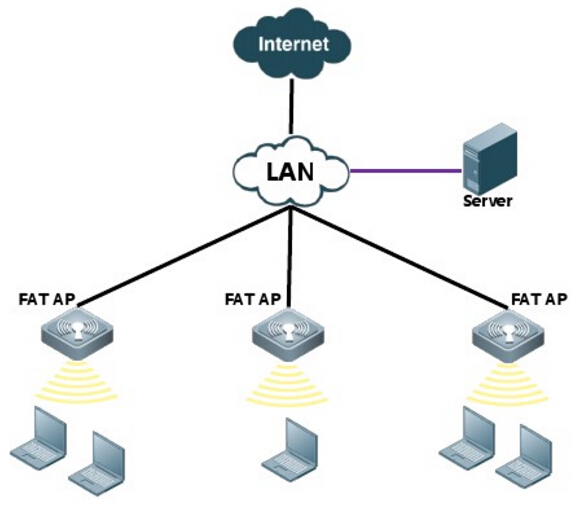With the rapid development of Ethernet network, cables are widely adopted for wired network connectivity. However, this may also lead to the problem of cable mess when large quantities of cables are deployed. In order to solve this issue, wireless network is now accepted by most network users to reduce the employment of cables. Wireless access point is an important device for connecting the wired network with wireless network. This article will talk about the fundamental knowledge about wireless access point.
Wireless access point (WAP) is also known as access point (AP). It is a hardware device used in a wireless local area network (WLAN) for data transmitting and receiving. An access point connects users to other users within the network and also serves as the point of interconnection between the WLAN and a fixed wire network. Basically, the working principle of wireless access point is to broadcast a wireless signal that computers can detect, then computers can link to the network without using any wires.

According to different working modes, wireless access point can be divided into several categories. Fat access point is the standard type which is also named as autonomous access point. This device is independent to be separated from other network devices or fat access points. It can automatically manage the functions for wireless client devices, such as wireless authentication and encryption. It is enough to use the fat access point at home or small office.

However, when wireless access point is required in large enterprise or college campus, fat access point is not an ideal solution. Thin access point, namely lightwave access point, may be a better choice with all the functions controlled in a central device, like a wireless switch or wireless LAN controller. Thus, all the settings can be configured automatically by central device in a remote location.

Fit access point is the combination of both fat and thin access points. It provides the wireless encryption function and has a remote controller for management. Fit access point can also support the DHCP (dynamic host configuration protocol) relay to get IP address for the station.
Wireless access point used indoors are comparatively smaller for easier installation and maintenance. Signals broadcast from indoor access points are stable and high-qualified. Wireless radiation is also weaker which makes the indoor device ideal for dense deployment.
As for the outdoor application, access points are more solid to survive the harsh environment. Network signals are more stable with a bigger coverage. Point to point and point to multi-point network connections are widely used for outdoor application to link the networks among different locations.
The answer is no. A router can be an access point but an access point can’t be a router. A router is able to provide WiFi access and has an Ethernet switch built in, while an access point is to connect the wired Ethernet LAN to WiFi devices.

Nowadays, wireless network is everywhere around us saving a lot of troubles for managing cable mess. A wireless router is often enough for family use since the coverage is limited. However, if you need to build up wireless network in large areas, wireless access point is always necessary.
